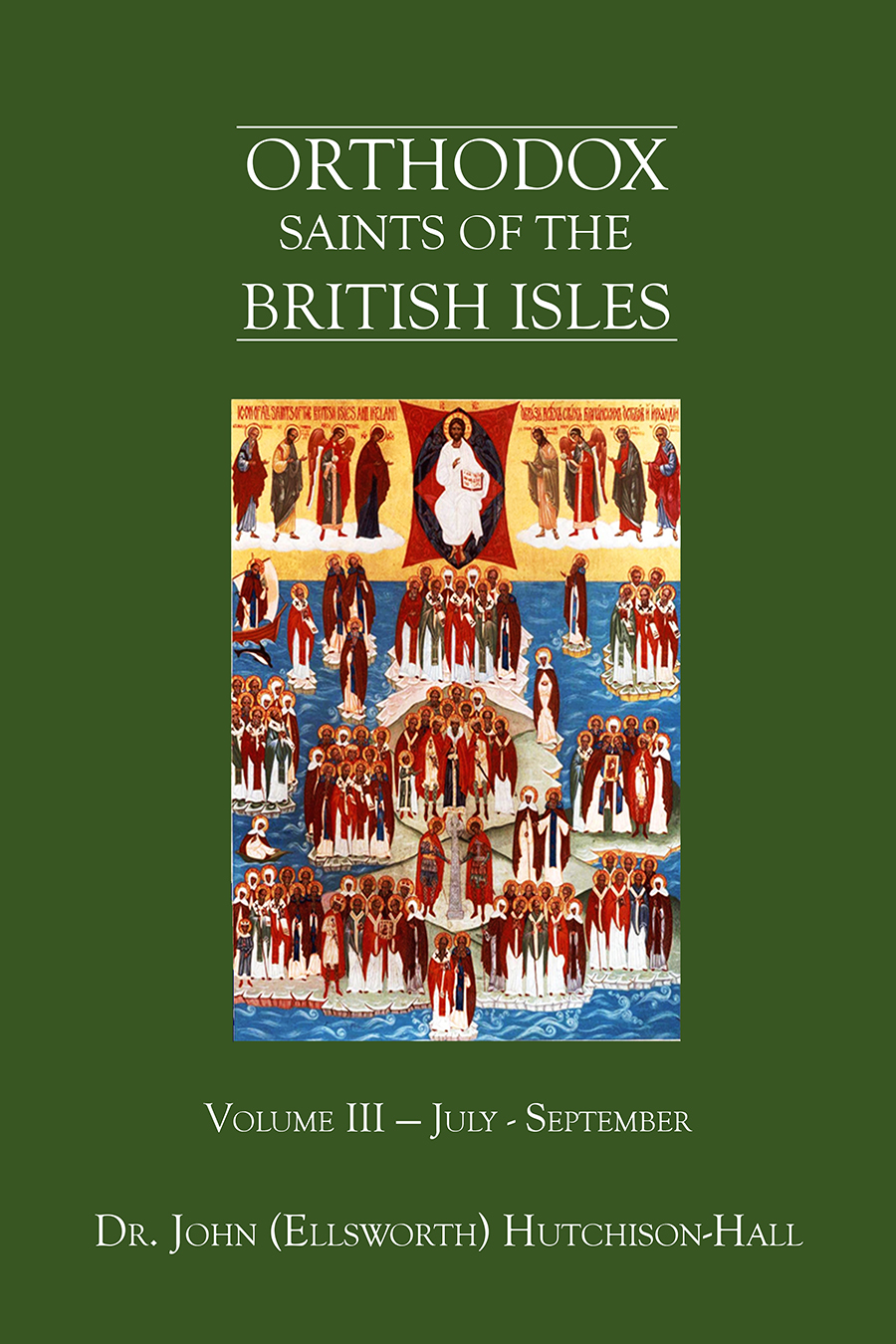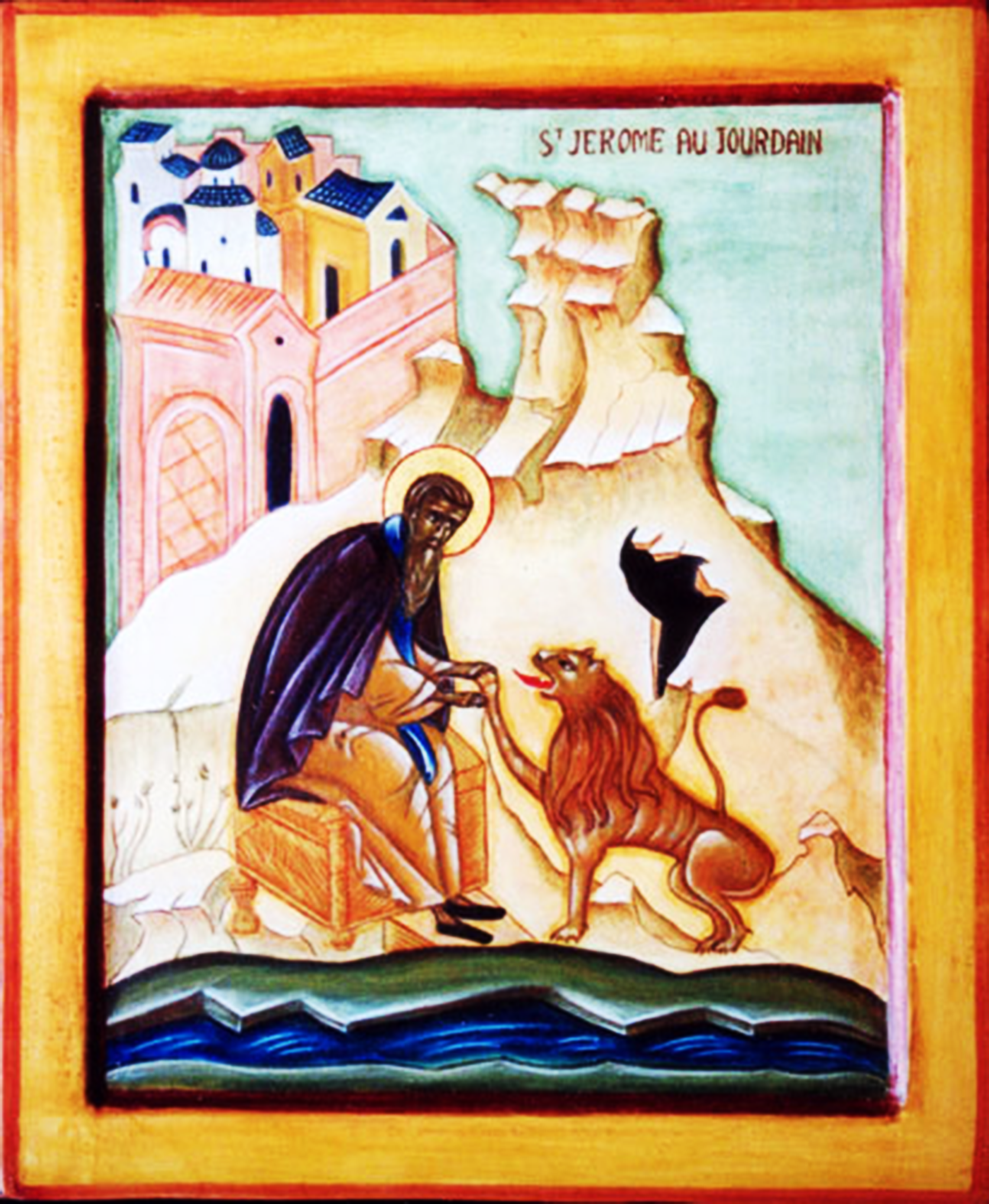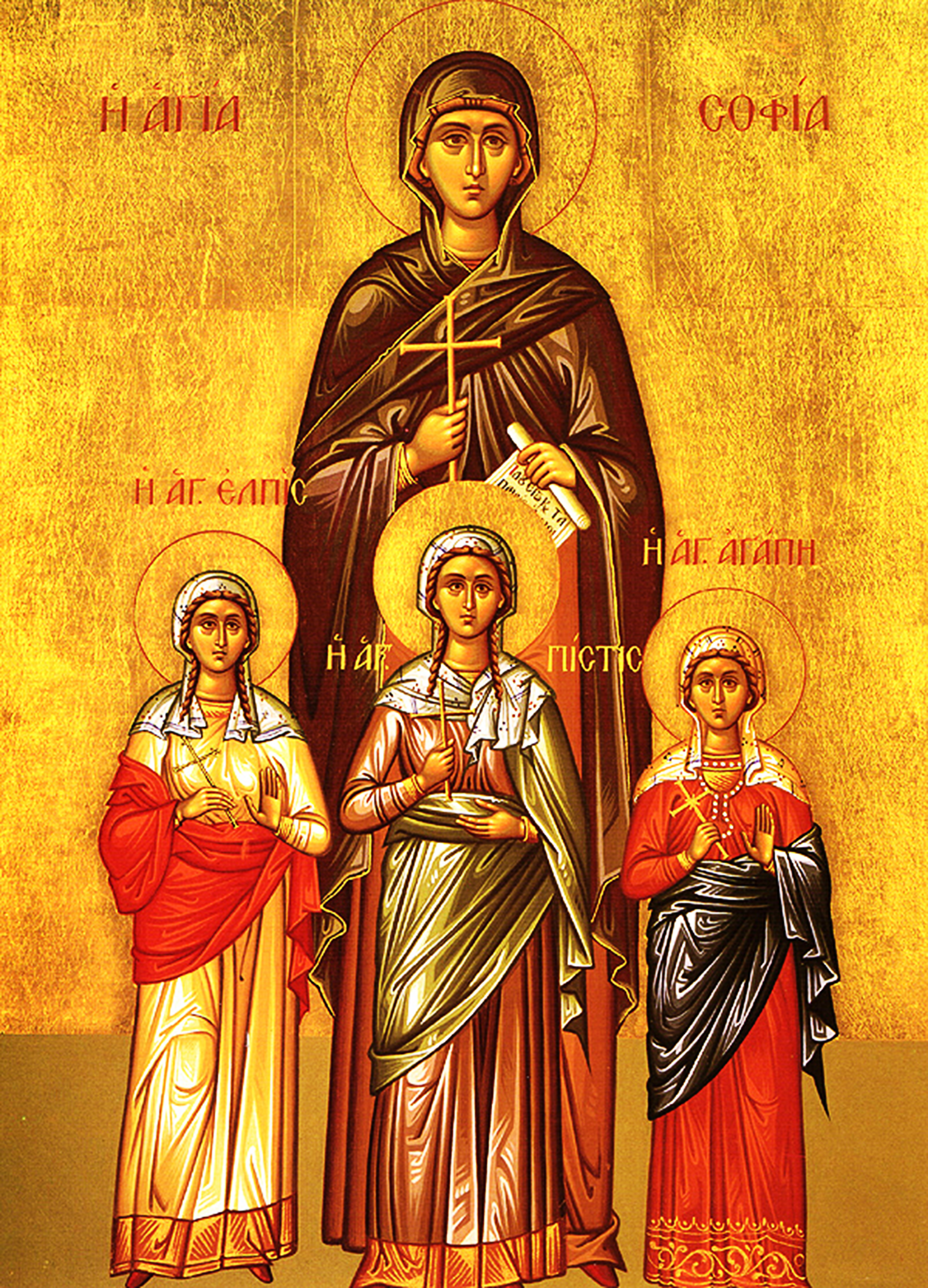
Orthodox Saints of the Pre-Schism
See of Rome
30th September (NS) — 17th September (OS) 2023
COLUMBA of CÓRDOBA, a nun at a monastery in Tábanos near her native Córdoba (southern Spain). According to tradition she was beheaded by the Moors in 853, during the reign of Emir Muhammad I of Córdoba (r. 852–886), it is said her body was thrown into the river Guadalquiver. Fortunately, her body was recovered by pious Christians and her relics were enshrined at two churches in Old Castile.
FLOCELLUS, (Second Century), a young man in Autun, Burgundy (France), who was tortured almost to the point of death and then thrown to wild animals in the amphitheatre. It is known that his martyrdom took place during the reign of the Emperor Marcus Aurelius (r. 161–180), however, the exact date is unknown.
JUSTIN of ROME, a priest in Rome who dedicated himself to burying the bodies of martyrs. In 259 St. Justin was martyred as well. In the ninth century his relics were translated to Frisingen (south-western Germany).
LAMBERT of MAASTRICHT, six years after being consecrated Bishop of his native Maastricht (south-eastern Netherlands), palace intrigue led to his exile in 674 by Ebroin, the Mayor of the Palace in Neustria - Burgundy (c. 657–680). St. Lambert spent the next seven years as a monk at the Princely Abbey of Stavelot-Malmedy (Fürstabtei Stablo-Malmedy) in present-day southern Belgium, before he was able to reclaim his See. After his return to Maastricht he provided a great deal of support to St. Willibrord of Echternach (7th November) and his mission to Frisia (present-day Netherlands), it seems even accompanying St. Willibrord as far as the lower stretches of the Meuse River. In 709 the continuing battles within the Palace caught up with St. Lambert again and he was murdered at his estate (present-day Liège, eastern Belgium). St. Lambert has been venerated as a martyr since his murder.
NARCISSUS of ROME and CRESCENDO of ROME, two saints in Rome who were martyred circa 260. St. Narcissus was the owner of a house in Rome that St. Laurence of Rome (10th August) used as his base for his work of distributing alms to the poor. Nothing is known of St. Crescendo other than he is listed in various martyrologies on this day.
RODINGUS (ROUIN), an Irish priest-monk who, shortly after ordination, left Ireland and entered the Abbey of St. Maurice (Abtei St. Mauritius) in Tholey, near Trier in the present-day German state of Rhineland-Palatinate. According to some sources, St. Rodingus may have even served as Abbot of Tholey at some point. Seeking solitude, St. Rodingus later moved to the Forest of Argonne (north-eastern France). St. Rodingus reposed circa 690.
SATYRUS of MILAN, the elder brother of St. Ambrose of Milan (7th December), who was baptised when he took ill on a trip from Rome. He re-joined his brother and their sister, St. Marcellina (17th July), at Milan; but unfortunately reposed shortly thereafter (circa 379–392). St. Ambrose wrote his essay, On the death of a brother, which he read as the homily at the funeral of St. Satyrus.
SOCRATES and STEPHEN, (Fourth Century), Saints Socrates and Stephen were British martyrs during the Diocletianic Persecution (303–313). Cæsar Constantius Chlorus (†306), who ruled with Imperial powers in the West, was less than vigorous in carrying out Diocletian’s edict of persecution, so most British Christians were spared. Hence, along with SS. Alban of Britain (22nd June), Julius of Caerleon, and Aaron of Caerleon (1st July), SS. Socrates and Stephen are the only British martyrs of that persecution listed in the ancient Martyrologies. Pious legends place the location of the martyrdom of SS. Socrates and Stephen as South Wales, but there is no evidence to support this.
THEODORA, a Roman noblewoman who devoted herself and her wealth to the care and support of the martyrs during the Diocletianic Persecution. It is most likely that she reposed, perhaps martyred, while the persecution was still on going, circa 305.
UNNI of BREMEN, a monk at the Imperial Abbey of Corvey (das kaiserliche und hochfürstliche Stift Corvey) in present-day North Rhine-Westphalia Germany. St. Unni was consecrated sixth Archbishop of Hamburg–Bremen (northern Germany) in 916. St. Unni continued St. Ansgar’s (3rd February) work of enlightening the Swedes and Danes, which earned him the title of ‘Third Apostle of the North’. St. Unni reposed at Birka in Sweden in 936. According to 11th century German Chronicler and author of the Gesta Hammaburgensis ecclesiae pontificum Adam of Bremen, St. Unni’s body was buried at Birka, but his head was entombed in Bremen Cathedral.
Get your copy of Orthodox Saints of the British Isles today.
Available at Amazon or your favourite e-bookstore.
ANTONINUS of PIACENZA, (Third Century), a soldier martyred near Piacenza in Emilia-Romagna in present-day Italy. There are sources which claim he was a soldier of the Theban Legion (22nd September), though this theory doesn’t show up until several centuries after his martyrdom, nor is it mentioned in Martyrologium Hieronymianum, or any other contemporary Lives. St. Antoninus is the patron saint of Piacenza, and namesake of the Basilica of Sant'Antonino in Piacenza. A phial of blood said to be his, has been known to miraculously liquefy like that of St. Januarius of Naples (19th September). St. Antoninus has been sometimes confused with the sixth century pilgrim to the Holy Land and author of an Itinerarium (on that journey known as Antoninus of Piacenza, or the Anonymous Pilgrim of Piacenza.
ENGHENEDL of ANGLESEY, (Seventh Century), a church in Anglesey (Ynys Môn), Wales is dedicated to this native Welsh saint. There is no further information on him extant.
HONORIUS of CANTERBURY, St. Honorius was a monk at the monastery of St. Gregory the Dialogist (3rd September) in his native Rome when he was selected to be a member of St. Augustine of Canterbury’s (27th May) mission to the Anglo-Saxons. St. Honorius succeeded St. Justus of Canterbury (10th November) as the fifth Archbishop of Canterbury. As Archbishop, he consecrated St. Ithamar of Rochester (10th June), the first native English bishop, for the See of Rochester. St. Honorius reposed in 653, the last of the Gregorian missionaries. He was buried in the west porch of the monastery of SS. Peter and Paul (later St Augustine's) in Canterbury. His relics were translated in 1091 to a new tomb, and at about this time a Life was written by Benedictine hagiographer Goscelin [of Canterbury] († after 1107).
JEROME, Eusebius Hieronymus Sophronius was born at Stridon in Dalmatia (Croatia). After studying in Rome, he travelled in Italy and Gaul (France) and lived for about five years in the Holy Land as a hermit. St. Jerome returned to Rome where he was ordained to the priesthood and served as an assistant to Pope St. Damasus (11th December). Following the repose of St. Damasus, St. Jerome returned to the Holy Land, settling in Bethlehem, where he founded several monasteries which were headed by St. Paula of Rome (26 January) and then her daughter St. Eustochium (28 September). He spent the rest of his life in Bethlehem working on the Vulgate Bible and writing commentaries on the Holy Scriptures. St. Jerome reposed in 420.
LAURUS (LERY), (Seventh Century), one of the Breton saints who more or less Christianised Brittany. St. Laurus also founded a monastery in the area that is now known as Saint-Léry.
LEOPARDUS the SLAVE, a slave-servant in the household of the Emperor Julian the Apostate (r. 361–363). It is believed St. Leopardus was martyred in 362 at Rome.
MIDAN (NIDAN) of ANGLESEY, although no reliable information on St. Midan survives, it is believed he lived in Anglesey (Ynys Môn) in Wales and reposed in the early part of the seventh century.
SOPHIA, mother of the virgin-martyrs Faith, Hope, and Charity (1st August) who were martyred during the reign of the Emperor Hadrian (r. 117–138). St. Sophia was permitted to take the bodies of her daughter for burial, after which she spent the next three days praying at their graves then she reposed peacefully.
TANCRED, TORTHRED, and TOVA, Martyrs of Thorney Abbey, according to the Croyland Chronicle, SS. Tancred, Torthred (men) and Tova (a woman) were among those martyred by the Danes in 870 at Thorney Abbey in Cambridgeshire, England. Their relics were included in those translated to Winchester by St. Ethelwold of Winchester (1st August) in the tenth century. Nothing else is known about these martyrs.
URSUS and VICTOR, Martyrs of the Theban Legion, SS. Ursus and Victor were members of the Theban Legion (22nd September). They managed to escape the martyrdom of most of their comrades, however, they were captured soon after and martyred as well.
Prior to the Schism the Patriarchate of Rome was Orthodox, and fully in communion with the Orthodox Church. As Saint John of Shanghai and San Francisco +1966 said “The West was Orthodox for a thousand years, and her venerable Liturgy is far older than any of her heresies”.
Details of British Saints excerpted from Orthodox Saints of the British Isles.
Details of continental saints from these sources.
In many cases there are several spelling versions of the names of saints from the British Isles. I use the Oxford Dictionary of National Biography version as the primary version with the more prevalent version in parenthesis e.g. Ceadda (Chad) of Lichfield.



